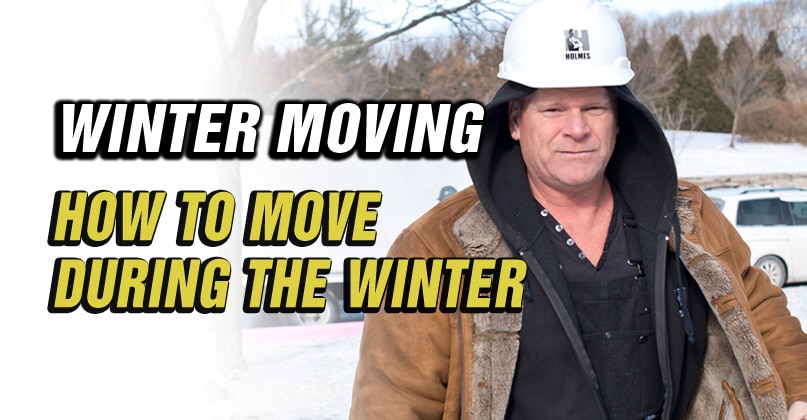I love my kitchen but it’s not large so it gets messy fast – add two growing young daughters, a husband and a cat – you have to stay organized....
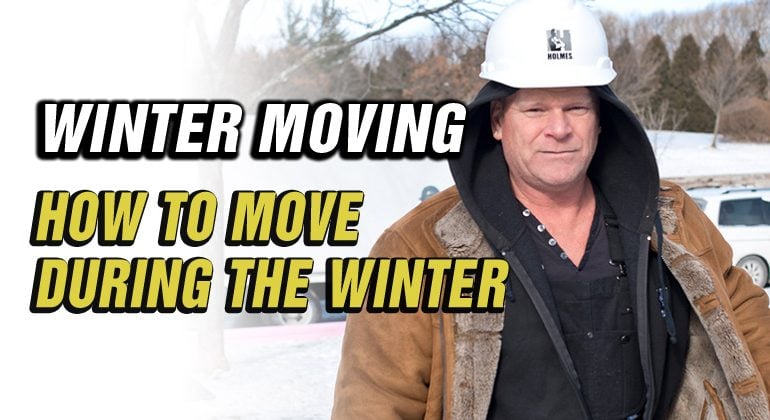
How To Move During Winter
By Mike Holmes
Mike’s Advice / Buying & Selling Your Home
Thursday, February 14th, 2019 @ 12:11pm
A lot of people avoid buying a house in the winter. Buying a house in the winter might actually tell you a lot about how the house performs. If there are spots on the roof not covered in snow, it might indicate heat is escaping through the attic. When you walk through the home, are there cold spots?
But moving during the winter is another story and takes careful planning. You have to deal with unpredictable weather, snow, and slippery walkways. It’s common sense to clear the driveways and walkways. Here are some other tips that will help make your move easier:
Prepare Your Home
Whether you have movers or friends and family helping you make the move, you need to ensure safety is the #1 priority for everyone. That means shoveling your driveway and using salt to deice the driveway. But if you know me, you know that I’m not a big fan of salt – it destroys your grass, eats away at the brick mortar and it can also make your pets sick. I’d rather use a generous amount of gravel as a natural alternative.
Another issue I see homeowners choose to ignore is icicles. Icicles are an indication of water backup (formation of an ice dam). These ice dams form around the edge of your roof and prevent melting snow from draining off your roof. This backup of melted snow can find its way into the shingles and into the attic. It can even flow into your exterior wall cavities and end up in your basement. The icicles that form can be extremely dangerous for the movers moving furniture underneath. Check out my tasks that you should tackle on your winter maintenance checklist for more.
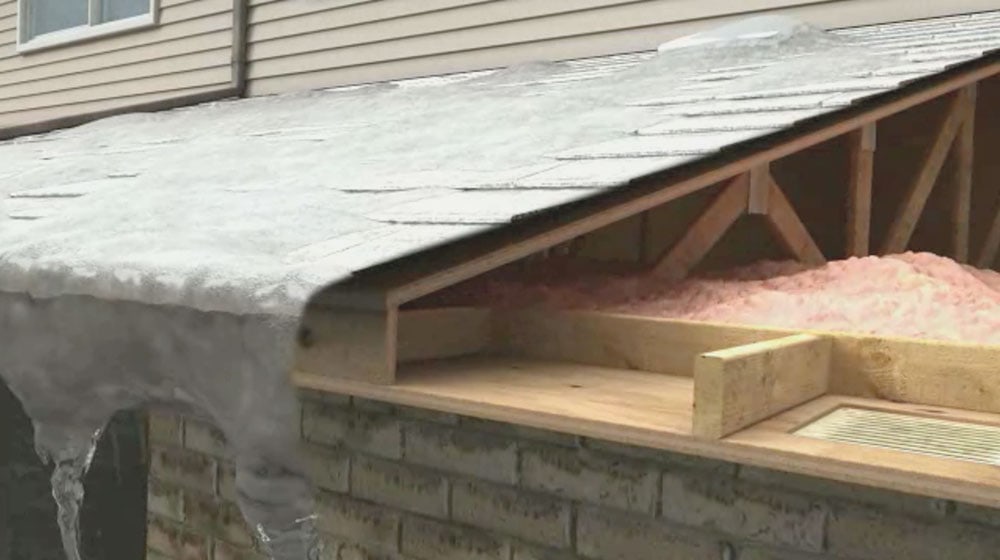
This goes to show how a backup of melted snow can find its way into the shingles and into the attic.
All of this could also end up hurting the resale value of your home, which you need to consider.
Check The Utilities In Your New Home
Let’s just picture that it’s -15 degrees Celsius (or 5 degrees Fahrenheit for those in the U.S.). You step outside the heated moving truck and begin to unload your boxes into your new home and then once you step inside you realize there’s no electricity. No heat, no hot water or anything. That’s why you want to visit the house a couple of days earlier to ensure everything is working at your new home.
I also recommend having a portable generator handy. You never know when a bad storm could kill your electricity. A portable generator will help keep a few appliances running and your lights on until the power comes back.
Protect The Floors
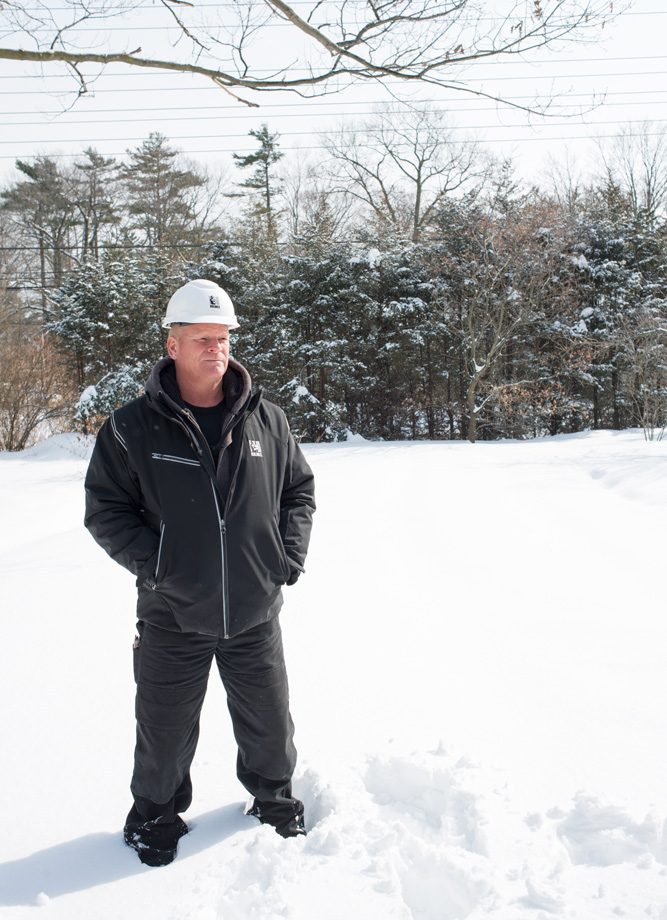
After a snowfall, the last thing you want to do is drag all that snow into your new home.
Do you know what can ruin a good hardwood floor or carpet? Snow, water, ice, mud, you name it; it can ruin your floor. I always recommend wearing steel-toe boots during moving but you need to clean them before walking with them inside your home. Or use plastic sheeting to ensure busy areas are protected from all the snow and sand.
There are some homeowners who decide to install hardwood flooring right at the front door. That’s not very smart. You are going to bring snow and water into the house and ruin the wood. You can actually buy tiles that look like hardwood flooring if that’s the look you are going for.
That’s what we did for the Country House on Holmes+Holmes, and I think it turned out very well. And of course, we installed Schluter® Ditra underneath the tiles so they won’t crack over time.
Don’t Overload Your Circuits With Heaters
Constantly opening your front door and garage door during the move will obviously bring cold air into your house. Many homeowners tend to use portable heaters during the move. This makes me a little nervous because people tend to plug too many things into one outlet. When too many appliances and devices are plugged into a circuit, more electricity is being drawn than what the circuit can safely handle. This is called an overloaded circuit and can cause fuses to blow, circuit breakers to trip, and possibly an electrical fire.
Watch out for these warning signs; flickering lights; fuses that always blow; breakers that always trip; appliances that have a burning smell when they’re on, including the lights in a room; outlets that spark; discolored wall outlets; outlets and switches that are hot when you touch them.
Even if you don’t notice any of these, you should still be cautious with your space heaters. Keep them 3 feet away from anything and you should always turn them off when leaving the room. Always be aware of where the space heater is because if it gets knocked over it can become a fire hazard.
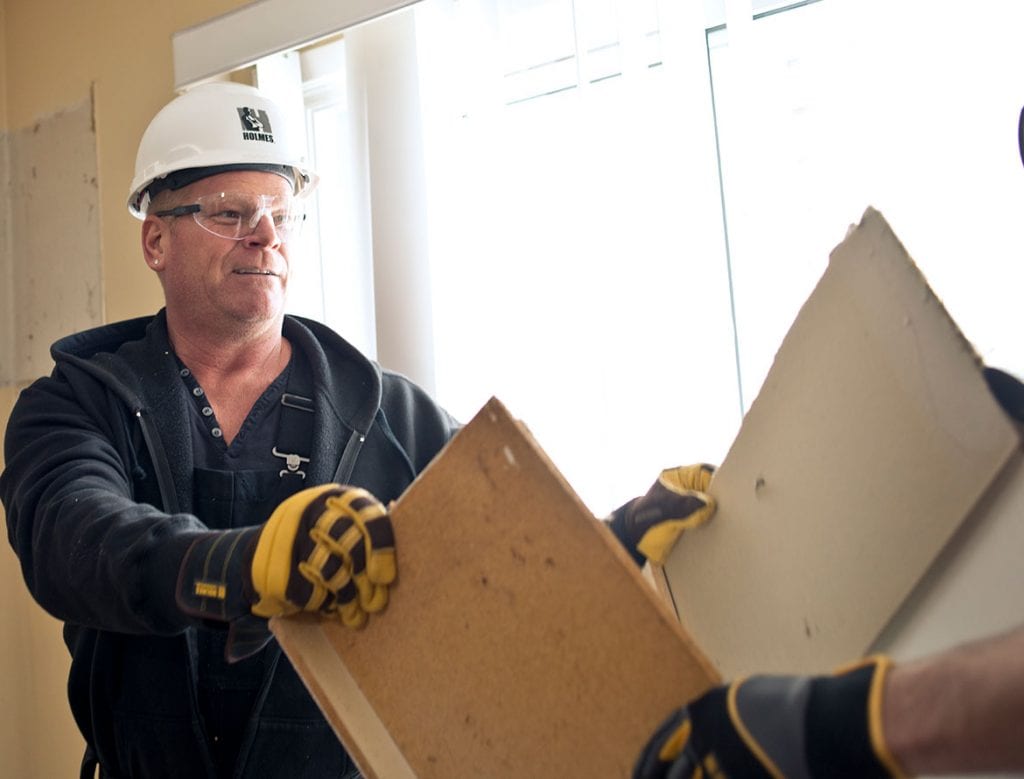
Whatever you need to move, you need to ensure you have space to move. The last thing you want to do is knock over a space heater and forget about it.
Check Your Weather App
Last but not least, I’m always following the weather. My kids Sherry and Mike Jr make fun of me for being so obsessed with the weather. As a contractor I know my construction plans could easily get delayed because of poor weather conditions, that’s why I always plan around the weather. Snowstorm happening on a Saturday? Move on Friday. Does snowstorm begin at 4:00 PM? Wake up even earlier and get it done faster.

Always check your weather app and be flexible with your daily plans.
Moving during winter is not easy but we can’t all move in the spring or summer. It’s important to take your time, be patient, and to ensure that safety is your #1 priority when moving during winter.
READ NEXT
